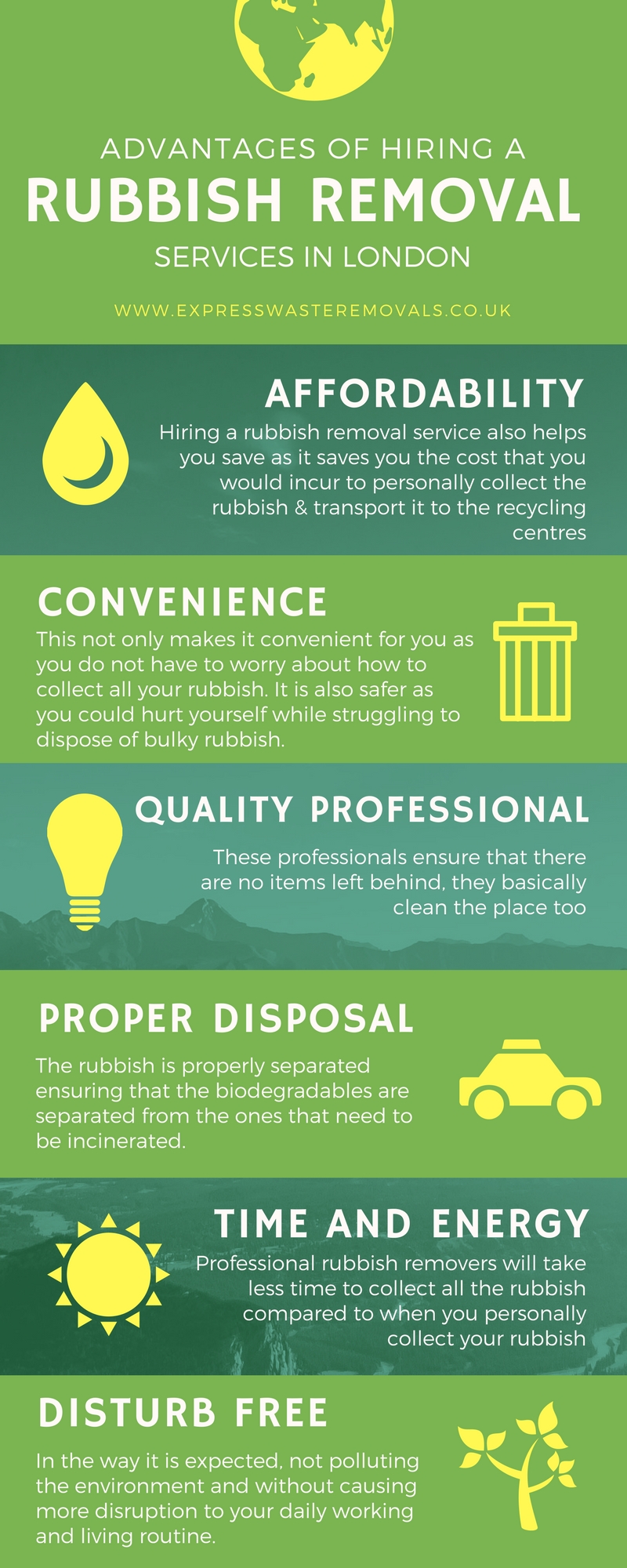The Ultimate Guide To Selecting The Appropriate Dumpster Size For Your Project
The Ultimate Guide To Selecting The Appropriate Dumpster Size For Your Project
Blog Article
Published By-Hahn Hahn
When starting a project that calls for a dumpster, the dimension you choose can significantly impact its effectiveness and cost-effectiveness. Imagine having the best container that fits all your waste without being exceedingly large or too little. It all beginnings with recognizing the nuances of your task and choosing a dumpster dimension that lines up with your details demands. So, before you decide, consider the aspects at play to make sure a seamless waste monitoring procedure from start to finish.
Variables to Take into consideration
When selecting the best dumpster size, there are several crucial variables to consider.
First, think of the type of waste you'll be disposing of. Various products may need varying quantities of room, so recognizing what you'll be putting in the dumpster is critical.
Next off, examine the quantity of waste you expect to create. If you ignore the quantity, you might require to make numerous trips to throw away whatever, which can be bothersome and pricey. On the other hand, renting a dumpster that's also huge can lead to unnecessary expenses.
Additionally, take into consideration the room where the dumpster will be put. Make certain there's enough area for the dumpster to be delivered and picked up with no obstructions.
Last but not least, think of any weight limitations that may use. Going beyond the weight limitation can result in extra costs or even the refusal of service.
Dumpster Size Options
For selecting the ideal dumpster dimension, it's essential to have a mutual understanding of the offered options. Dumpster sizes normally range from 10 to 40 cubic lawns, with variants in between.
A 10-yard dumpster appropriates for little jobs like a garage cleanout or a small remodelling. If you're tackling a medium-sized task such as a cooking area remodel or a basement cleanout, a 20-yard dumpster may be the appropriate option.
For bigger jobs like a whole-house restoration or business construction, a 30 or 40-yard dumpster could be better to fit the volume of waste generated.
When choosing a dumpster size, take into consideration the quantity and sort of debris you expect to get rid of. It's much better to choose a slightly larger dimension if you're unclear to stop overfilling. Bear in mind, it's even more cost-effective to rent a dumpster that fits your needs rather than having to get an additional one.
Matching Size to Job
Ideally matching the dumpster dimension to your project is vital for efficient waste management. To figure out the appropriate size, consider the range and nature of your job.
For little family cleanouts or renovations, a 10-yard dumpster might be sufficient. These are normally 12 feet long and can hold around 4 pickup lots of waste.
For please click the following web site like remodeling numerous areas or clearing out a big estate, a 20-yard dumpster could be better. https://chancevenwf.shoutmyblog.com/29515737/the-complete-manual-for-junk-elimination-solutions-crucial-details-you-need-to-be-aware-of are around 22 feet long and can hold approximately 8 pickup loads.
If you're taking on a significant construction task or business remodelling, a 30-yard dumpster could be the most effective fit. These dumpsters are about 22 feet long and can accommodate regarding 12 pickup tons of particles.
Matching the dumpster dimension to your project ensures you have sufficient area for all waste products without paying too much for unused capacity.
Conclusion
Finally, selecting the ideal dumpster dimension for your task is crucial for reliable waste disposal. By taking into consideration factors like the kind and amount of waste, room accessibility, weight restrictions, and spending plan constraints, you can guarantee you have the ideal dimension dumpster for your needs. Make sure to match the dimension of the dumpster to the extent and nature of your task to prevent overspending on unneeded expenditures.
